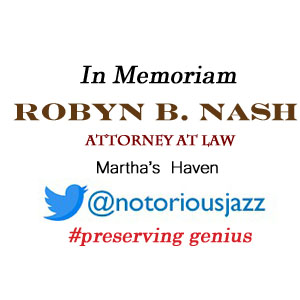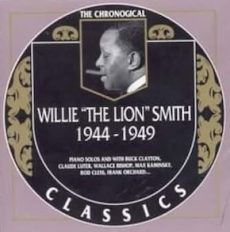
Daily Dose Of Jazz…
Frank Orchard was born on September 21, 1914 in Chicago, Illinois. He studied at Juilliard from 1932-33 and performed for a year with Stanley Melba’s band, but then worked outside of music altogether, mostly as a salesman until 1941.
Orchard became a part of the New York Dixieland scene in the 1940s, working with Jimmy McPartland, Jimmy Dorsey, Louis Armstrong, Bobby Hackett, Max Kaminsky, Wingy Manone, Joe Marsala and the Eddie Condon gang.
The mid-1950s saw Frank’s move to Dayton, Ohio and eventually to St. Louis, Missouri and still playing trombone although out of the spotlight. He never led his own record date and returned to New York in the 1960s. He worked regularly at Jimmy Ryan’s from 1970-71 and with Billy Butterfield in 1979.
Trombonist, violinist, banjoist and tubist Frank Orchard, who also played in the Willie “The Lion” Smith band with Jack Lesberg, Mac McGrath, Max Kaminsky, Rod Cless, died December 27, 1983 in Manhattan, New York City, New York.
More Posts: banjo,history,instrumental,jazz,music,trombone,tuba,violin
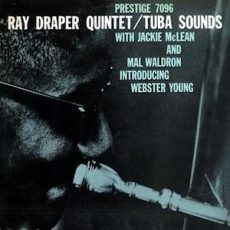
Daily Dose Of Jazz…
Raymond Allen Draper was born on August 3, 1940 in New York City. He attended the Manhattan School of Music in the mid-1950s. As a leader, he recorded his debut album, Tuba Sounds in 1957 for Prestige Records at the age of 16, with a quintet. His sophomore album, The Ray Draper Quintet featuring John Coltrane, was recorded at the age of 17 with slight changes in his quintet, including John Coltrane.
His drug use got him imprisoned, however, after his release in the late 1960s, Draper formed the first jazz rock fusion band composed of established jazz musicians of the day. This preceded Miles Davis’s Bitches Brew, which is normally recognized as the first jazz rock fusion group and recording by two years.
Original band members included George Bohanon on trombone, Hadley Caliman on tenor sax, John Duke on upright bass, Paul Lagos on drums and Tom Trujillo on guitar. This band, after its first live performance at Hollywood’s Whisky a Go Go and was offered numerous record deals and booked solid at rock venues for the rest of the year. Lagos went on to tour with John Mayall and was one of the founders of the group Pure Food & Drug Act, featuring Don ‘Sugarcane’ Harris.
He began using heroin again and the more experienced band members quit, except for the youngest member, guitarist Tom Trujillo and his landlord, Chuck Gooden. He hired San Diego trumpeter Don Sleet and saxophonist Ernie Watts. Eventually Draper brought drummer Paul Lagos back, along with saxophonist Richard Aplanalp, trumpeter Phil Wood, and bassist Ron Johnson, becoming a new group named Red Beans and Rice.
They recorded the album Red Beans and Rice Featuring Sparerib Ray Draper on Epic Records. They disbanded, he got hooked on drugs again, and left California for a couple of years in London, England. He was seen sporadically performing and recording. Returning to New York City in the hopes of becoming clean, he remarried and had two children, and continued to compose for other musicians.
He went on to play for a time with Max Roach, and in 1982 he joined the Lionel Hampton Orchestra. Tha year, coming out of a bank in Harlem, he was held up by a gang of juveniles. The 13-year-old leader of the gang shot him, after he had given him his money.
Tuba player Ray Draper, who had been clean of drug use and was working on a composition found in his attaché case, died on November 1, 1982.
More Posts: bandleader,history,instrumental,jazz,music,tuba
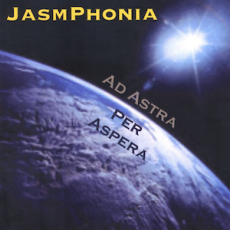
Daily Dose Of Jazz…
Eric Soleil was born July 9, 1961 on the wind-swept plains of the Kansas prairie and began his musical career in elementary school where he was forced to play the trumpet that was handed down from his older brothers. He infuriated his band instructor by making up his own parts instead of playing the fourth-chair lines intended for him. He also began to compose little pieces on the family’s upright piano. In high school, Eric pursued concert choir and the thespian arts, earning a theater scholarship to college. At 19 years of age, he began studying the electric bass.
Deeply rooted in classical music, he also had an adoration for American jazz, which led to incorporating classic orchestral voices with some neo-Baroque, jazzified idioms that became Jazz-Symphonia. He later played the baritone, french horn, trombone, finally settling on the tuba where he remains an inveterate bass clef performer.
A unique blend of symphonic instruments with jazzy undertones, JasmPhonia is the nom de guerre of Eric, a gifted multi-instrumentalist/composer who utilizes acoustic symphonic voices and midi composition to create a rich mixture of chamber music and Nu-jazz styling. Eric has compiled his first CD, “Ad Astra Per Aspera” (To The Stars Thru Difficulty).
Tubist Eric Soleil continues to pursue a career in music, writing from the keyboard, drums, and bass, and performing his own unique original compositions. He is also continuously developing his skills as an artist, producer, and engineer.
More Posts: bandleader,bass,drums,engineer,history,instrumental,jazz,keyboard,music,producer,tuba
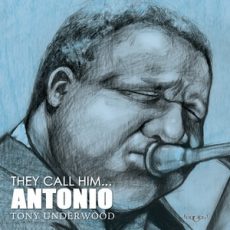
Daily Dose Of Jazz…
Antonio Underwood was born on July 7, 1960 in Charlottesville, Virginia. He matriculated through the Yale School of Music as a Classical Tuba Major, where he was awarded several honors. Graduating in 1987 he has since been a member of the two-time Grammy Award winning McCoy Tyner Big Band.
He began his career playing in NYC clubs at the age of nineteen and has performed alongside Max Roach, Jerry Gonzalez, Julius Preister, Delfeayo Marsalis, Bob Belden, Christian McBride, Cecil Taylor, Cecil Bridgewater, Vincent Herring, Joshua Redman, Javon Jackson, Lester Bowie, John Faddis, Charlie Haden, Eddie Henderson, Billy Harper, and the list goes on.
He has been a cast member of Broadway musicals Juan Darien, Jelly’s Last Jam, One Mo’ Time and Further Mo. Tony’s composition and orchestration credits include recordings by Be Be Winans, Terry Dexter, John Purcell, The World Saxophone Quartet, Anthony Montgomery, among others. Owner of his own published material (380), brass quartets published by TAP Music (Iowa), and Jazz compositions published by ENJA Music, Germany.
Underwood has scored films Rumbling of the Earth and Shadows of the Dead. He has produced tracks for Lisa Fischer, Katreese Barnes, Steve Jordan, and Anthony Jackson. He is the first Black person to be a George Lucas scholar to the Scoring for Motion Pictures and Television program at USC and is a Fulbright Scholar Lecturer in Serbia.
Tubist, composer and lecturer Tony Underwood continues to perform, compose and lecture.
More Posts: bandleader,composer,history,instrumental,jazz,lecturer,music,tuba
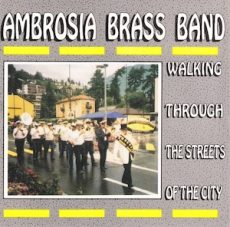
Daily Dose Of Jazz…
Nino Frasio was born April 26, 1950 in Milan, Italy and his introduction in music was taken in 1964 as a guitarist and banjoist. He graduated in 1976 from the Universitá degli Studi of Milano and studied with professor Enea Vallesi. Like most eenage players of the time he followed the Beatles craze, playing lead guitar where he also disastrously attempted to sing somewhat understandable English.
In 1969 he joined the Italian cast of Up With People! and played many performances on lead guitar and tenor banjo. Leaving the show in 1971, when he started his day job career, and since then has dedicated himself exclusively to classic jazz. His banjo studies had him discovering the other four string tuning and soon was doubling on tenor and plectrum banjo.
After performing on the national Italian TV network on a broadcast of Musica Insieme, he founded the New Orleans styled Olympia Ragtime Band in 1972. a pure New Orleans style band in which he played banjo. Frasio left the band in the early ’80s and started a busy musical career as a free-lance performer with the many jazz bands active in Northern Italy. By 1973 he was enlisted in the Italian Air Force where he began the study of cornet and tuba. Post discharged he chose to play the tuba.
In 1984 Nino joined the Ambrosia Brass Band as a sousaphonist which gained a wide popularity all over Europe playing marches in the style of the great brass bands of New Orleans. He continued freelancing gigs on banjo and guitar, and participated in a long-lasting series of weekly live radio broadcasts.
In the mid-Nineties Frasio went back to playing classic jazz with a new project called the Odd Fellows New Orleans Quartet & Band. Three years later he joined the Jumpin’ Jazz Ballroom Orchestra on banjo and guitar and the ten piece band played a repertory of classic jazz tunes of the ’20s, ’30s and ’40s.
As he aged Nino slowed down his freelance playing and started to look for his old music pals again to play his banjo in a strict New Orleans style. He went on to become a founding member of the Pegasus Brass Band, which performed at several European jazz festivals. He played regularly with the Milano Rhythm Kings led by Giorgio Alberti, then with the Savannah Serenaders, before joining on guitar the Prefisso02 Orchestra, with its beautiful repertoire of early ’40s Italian swing.
Banjoist Nino Frasio, who also plays guitar, tuba and sousaphone, continues to perform with a series of brass bands and orchestras.
More Posts: banjo,guitar,history,instrumental,jazz,music,sousaphone,tuba





